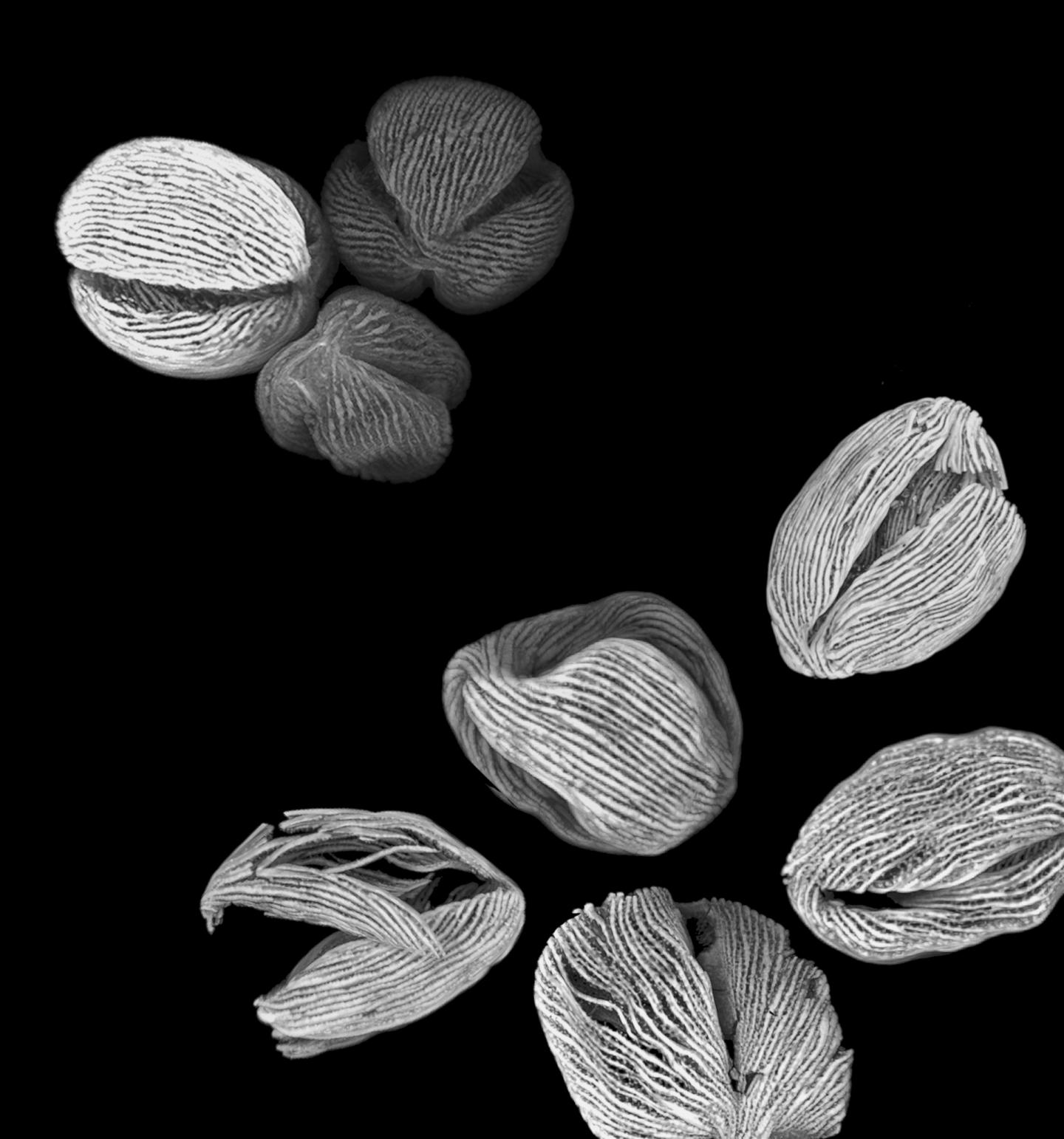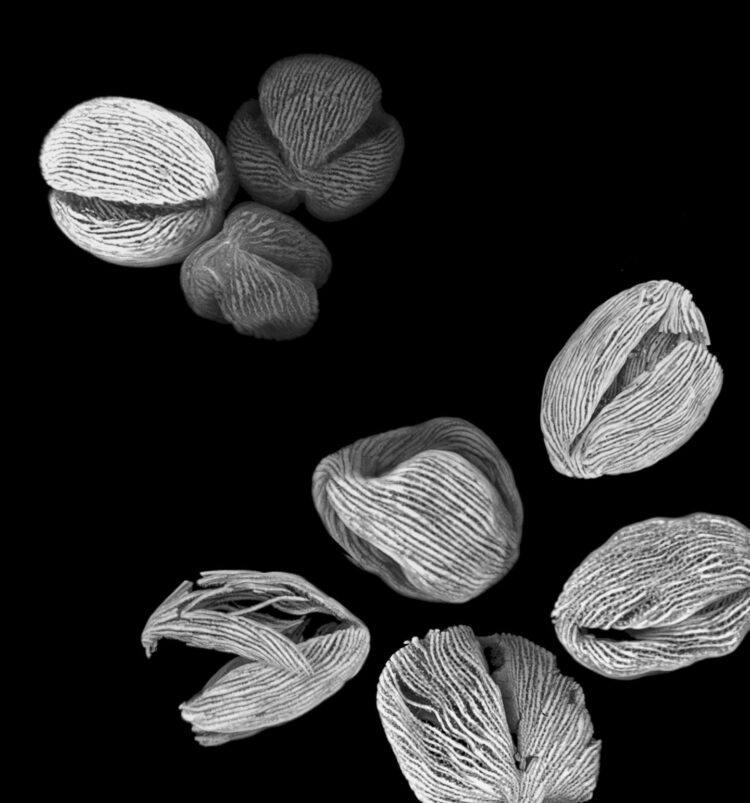
Credit: Anna Barnes
Plant biology researchers at the University of Illinois and computer scientists at the University of California Irvine have developed a new method of fossil pollen identification through the combination of super-resolution microscopy and machine learning. The team, led by Dr. Surangi Punyasena and Ms. Ingrid Romero (associate professor and graduate student in Plant Biology, respectively), developed and trained three convolutional neural network models to identify fossil pollen specimens from an unknown group of legumes.
“The global fossil pollen record is one of the most abundant terrestrial records that we have,” said Punyasena. “It’s the record that preserves the history of environmental and ecosystem change for the last 470 million years.” The pollen record is crucial for understanding how plant species evolved and dispersed globally. By reconstructing how different ecosystems and species have changed through time, we can better understand current plant relationships and better inform conservation and climate mitigation efforts.
However, correctly measuring and identifying the morphological features of a pollen grain can be incredibly difficult. “Much of the palynological record doesn’t have biological identifications associated with it,” explained Punyasena. “Many of the types that we know from deeper time (beyond the last 100 thousand years or so) are groups for which we don’t have a definitive sense of their identity. The effort needed to classify these types has just been too great.”
Traditional methods such as scanning electron and transmission electron microscopy destroy the sample and are very labor- and time-intensive. Airyscan, by comparison, is a light microscopy method that can see below the diffraction limit of light and can be used to non-destructively collect cross-sectional images from inside and outside of the pollen grain. “This method is very useful for samples that are not abundant,” said Romero. “You can mount the grains on a slide and image them efficiently without damaging the sample.”
This new approach allows researchers to train machine classification models using pollen from living plants and then confirm their fossil relatives, iteratively learning from each identification to differentiate among specimens that closely resemble one another. This allowed the team to recognize genera within a larger morphological grouping of fossil legume pollen for the first time. The trained models classified fossil specimens from western Africa and northern South America dating back to the Paleocene (66-56 million years ago), Eocene (56-34 million years ago) and Miocene (23-5.3 million years ago). The most accurate model used a combination of images from both the exterior and interior of the pollen grain and was able to correctly identify samples with 90.3% accuracy.
These results suggest that Airyscan microscopy and machine learning methods could not only aid in identification of unknown specimens, but also help to constrain the time of a plant group’s origin or extinction. With more information about the relationships and distribution of pollen samples in deep time, researchers can better pinpoint when and where evolutionary changes occurred.
“We have seen a huge improvement in imaging capabilities and the power of computer vision algorithms. We have gotten to the point where these algorithms can interpret complex images in a very efficient and intelligent way, giving us usable identifications. That is the key difference and innovation of these models – it’s the ability to train a system on pristine modern taxa and then use that system to identify unknown and often physically distorted fossil types,” said Punyasena. “This approach replicates and extends the abilities of the human analyst.”
###
The study, Improving the taxonomy of fossil pollen using convolutional neural
networks and super-resolution microscopy, is published in the Proceedings of the National Academy of Sciences.
The work was supported through funding from the National Science Foundation and the University of Illinois at Urbana-Champaign, with collaborators at Carnegie Mellon University, UC Irvine, Smithsonian Tropical Research Institute, University of Montpellier, University of New Brunswick, Missouri University of Science and Technology, and the Universidade Federal de Mato Grosso.
Media Contact
Rosemary Keane
[email protected]
Related Journal Article
http://dx.





